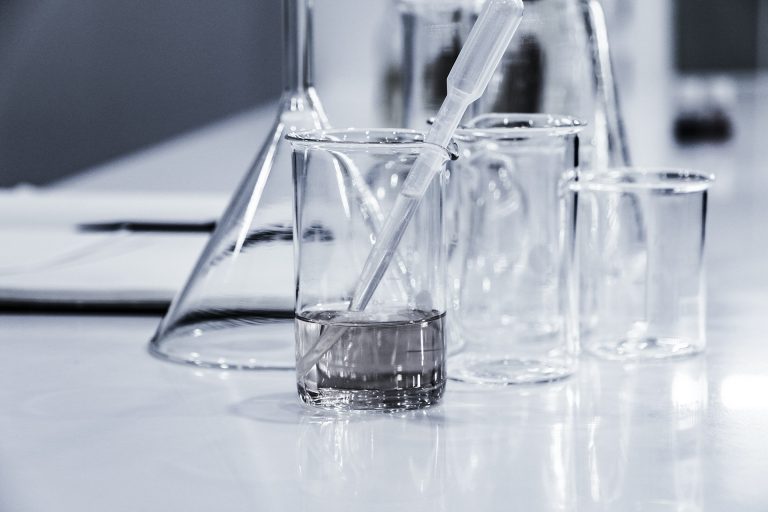Concordia’s Department of Chemistry and Biochemistry brings the lab to the students this summer and fall

Chemistry is a particularly hands-on science. So what happens when students can’t be in the lab?
For a few faculty and staff members in Concordia’s Department of Chemistry and Biochemistry, the answer was clear: they would bring the lab to the students.
The department is making at-home chemistry kits available to the General Chemistry 1 (CHEM 205) class for the summer and fall terms. This will give students the ability to do lab-inspired experiments during a fully online course. About 100 kits are being delivered this summer and at least 500 in the fall.
“The idea of learning chemistry without doing laboratory work was unbelievable to me,” course coordinator and senior lecturer Cerrie Rogers says, comparing it to trying to become a skilled soccer player simply by watching games, reading the rules and learning about sports psychology.
“We know very well that some of the basic lab skills cannot be easily learned by describing them in words or even by having students watch demonstration videos,” adds interim technical supervisor Vincent Lau, who was involved in arranging the chemistry kits.
“The tactile manipulation of apparatuses in making the actual volume and mass measurement is something that’s irreplaceable. On top of that, these skills are essential foundations of lab courses that students will be taking in the future.”
Getting at-home chemistry kits was particularly necessary for CHEM 205 because it’s an entry-level class, says Jennifer Romero, the course’s lab coordinator, who was also involved in the initiative.
“We really feel it’s important to have this experience because this course is being taken by students who may not have had chemistry before.”
Safety and accessibility at top of mind
The kits contain lab-grade glassware, including beakers, flasks and graduated cylinders. They also have a weighing balance and a burette, the equipment that gives students the ability to measure mass and volume with reasonable accuracy and precision. Lau says this differentiates them from most recreational-use chemistry kits.
“It allows for quantitative measurement that is so critical in the understanding of the chemistry of the reaction.”
Students will perform the experiments in class over Zoom video conferencing, where they’ll have support from a teaching assistant and can talk with their fellow classmates and participate in team exercises.
The kits are designed to simulate the actual lab training students would be getting on-campus.
The team collaborated with ChemScience, a Montreal-based glassware vendor that the department has worked with for more than 20 years. The company sourced the necessary equipment and glassware from overseas and arranged for safe delivery of the kits to students.
While there were some challenges getting air shipments from abroad due to the COVID-19 pandemic, Lau was confident the kits would arrive in time for the start of the summer term’s at-home lab.
To make the experiments safe for students to do on their own, Lau and Romero looked at the chemicals they would have normally used in the lab and considered how they could be replaced with a safer alternative. They also received support and feedback from Concordia’s Legal Services and Environmental Health and Safety.
“We went through multiple iterations to ensure that not only are the chemicals safe but that the lab procedures were too,” Lau explains. “We had to jump out of our controlled lab mindset and think about the reality that our students may have young children or pets at home. We tried our best to anticipate any situation they would encounter and give plenty of extra notes to keep things safe.”
Students will be able to do experiments with common household items such as salt, vinegar and rubbing alcohol, which are both easy to find and inexpensive to purchase. In one separation procedure, Romero says, students will use rice or beans and paper clips.
“Luckily, the fundamental introductory-level skills of chemistry — measuring, mixing and monitoring — are quite similar to the things we do when we make multistep recipes in a kitchen, even if the equipment is a little different,” Rogers adds. “The experiments will be quite engaging because of the familiar substances.”
“These are unusual times, and I am very proud of how our team came up with such a smart solution for our students while we wait for things to return to normal and we can welcome students back into our fully equipped labs.”
Beyond making the procedures safe for students, using easy-to-source ingredients has a side benefit, Lau notes. “We also want students to understand that chemistry is not only happening in the lab. It’s the exact same chemistry that happens in everyday life.”
Find out more about Concordia’s Department of Chemistry and Biochemistry.


